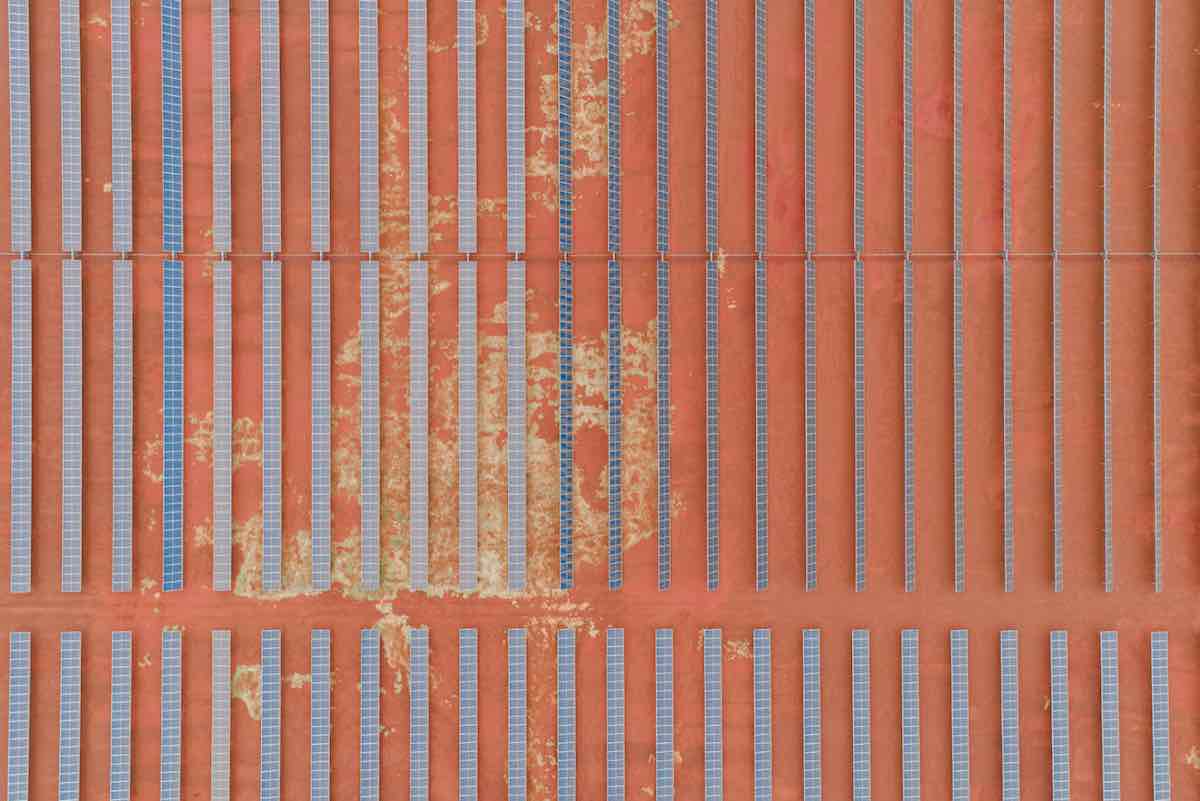

Alinta Energy
Iron ore billionaire and green energy evangelist Andrew Forrest has unveiled plans for one of the country’s biggest solar farms to help propel his mining company Fortescue Metals to its stretch goal of “real zero” emissions by 2030.
The plans for the Turner River solar hub, some 120 km south of Port Hedland, have been submitted to the state’s Environmental Planning Authority, and describe a 666 megawatt (MW) solar farm.
That would be the biggest in the country if built now, but will be overtaken in the meantime by the expansion of the New England solar farm in NSW to 720 MW. It will be, by some distance, the biggest solar – or wind – project in Western Australia, and the biggest to be built on an isolated grid.
The plans also include a big battery at the site, to ensure excess power can be stored for the evening, and a 220 kV transmission line which will connect the project to the North Star sub-station, near where a new 100 MW solar project is also being completed next to the huge magnetite ore mine of the same name.
It is one of a number of new initiatives, including a 190 MW solar farm at Cloudbreak, where construction will begin soon. All in all, the company plans 2 to 3 gigawatts (GW) of renewables and storage, as well as zero emissions mining equipment.
Forrest has ridiculed the “net zero” ambitions of countries and other corporations, describing the concept of net zero (which allows offsets to emissions) as a “con”, and saying they do not go anywhere near close to meeting science-based climate goals.
He is proposing to reach “real zero” at his giant Pilbara mines – the source of his astonishing wealth – which means burning no diesel or gas by the end of the decade. He has already signed multiple-billion dollar contracts for giant 270 tonne electric haul trucks and other electric equipment.
In its planning application, Fortescue says it has looked at alternatives, including an extension of the gas pipeline in the region.
“The greenhouse gas emissions associated with these alternatives are at odds with the Paris Agreement 2016, which aims to limit global warming to less than 2°C compared to pre-industrial levels,” it says. The document says its plans will involve solar, wind and battery storage.
The plans reveal that the solar farm will be split into two separate parts – a 456 MW component in the south and a 188 MW component to the north, subject to final design.
“Fortescue’s strategy of decarbonisation involves establishing and commissioning a number of of solar and wind farms, transmission infrastructure, substations and battery installations to cater for the energy needs of all ongoing and future iron ore operations,” the document says.
“The aim is to transition Fortescue from using diesel power and gas to renewable energy by 2030. To achieve the 2030 target of real zero, a total capacity of 1,500 MW of solar PV generation is required.
“The Proposal constitutes approximately one quarter of this total solar generation output. The Pilbara is regarded as being one of the best locations for solar generation in Australia and globally.”
Fortescue already sources solar power from the Chichester solar farm built by Alinta, and now owned by APA (pictured above). It hopes to complete the Turner River solar project bay February, 2029.
It says it has learned lessons from the construction of the nearby North Star solar project, which included that power infrastructure should be above ground as geotechnical studies identified only a thin layer of soil above bedrock.
“Burial of cabling would increase construction effort, disturbance, cost and schedule risks,” it says. More than 1,000 hectares of native vegetation will be impacted by the plans. Construction would take 18 months and the project would have a 25-year life before being either “repowered” or decommissioned.
A spokesperson for Fortescue said later that the company is currently working through land access and approvals for the remaining solar farm locations. These projects will be announced to the market as they reach final investment decision.
Forrest said earlier this week that Fortescue intends to save as much as $US1.2 billion a year by switching to green energy, noting that this figure represents the firm’s annual fossil fuel costs at present, and ridiculed the recent moves by Big Oil companies to ditch their renewable investments.
“I’ve always found that the customer is always right,” Forrest told CNBC’s Squawk Box Europe.
“Which is why we’re going renewable and moving away from oil and gas because our customers are saying, ‘we want energy but not at any cost, and if you can give us green energy at the same price as dirty [energy] then we are going to buy green every day.’ That’s my job, and that’s Fortescue’s job.
“You’ve got data centers popping up all over Europe and they want green energy if they can get it. They’ll take dirty [energy] if they can’t, sure. That’s Exxon Mobil’s and Total’s argument, ‘well, we’re just doing what the customers want.’ Actually, you’re not. Your customers want green energy,” Forrest said.
“Well, if [the] oil and gas [industry] doesn’t want to supply green energy, guess what, Fortescue will.”
Plans to develop an offshore wind farm 40km off the WA coast have gained fresh…
One of Australia's oldest wind farms turns 20 today, with some of the original staff…
Dutton has adopted a gas reservation policy and sweetened it with deregulation of gas extraction…
NSW-based company unveils its proprietary microemulsion flow battery technology for the first time, promising a…
BNEF says Australia is on the cusp of a big battery boom that could deliver…
Solar households may feel aggrieved about receiving not much for rooftop PV fed into the…